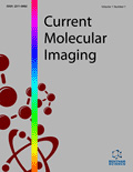Abstract
A protocol to load perfluoro-crown-ether (PFCE) nanoemulsion directly into yeast-derived glucan particles (GPs) was developed. It was observed that the PFCE encapsulation did not affect the 19F-MRI properties of the nanoemulsion that is currently in clinical trials. GPs loaded with PFCE nanoemulsion were taken up avidly by murine macrophages in vitro, resulting in a cellular uptake 150 % higher than the not GPs-entrapped nanoemulsion. Accordingly, a corresponding improvement in the 19F-MRI detection of the labelled cells can be obtained. The high biotolerability and versatility of GPs, make these microcarriers a promising option for designing of improved in vivo cellular imaging protocols.
Keywords: 19F-MRI, cellular imaging, glucan particles, macrophages, theranosis, perfluorocarbons.
Graphical Abstract
 37
37

